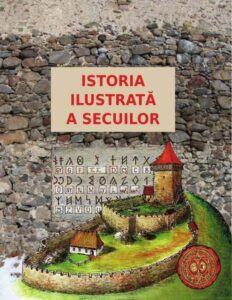The Hargita (Harghita) County Center for Preservation and Promotion of Traditional Culture published a book on Szekler history in Romanian; the launch of Illustrated History of the Szeklers took place in Bucharest this week.

Participants of the Romanian-language book launch included the academic curator of the book, historian Guszáv Mihály Hermann from Székelyudvarhely (Odorheiu Secuiesc), historian Lucian Nastasă-Kovács from Kolozsvár (Cluj-Napoca), Hargita County Council president Csaba Borboly, and journalist Lucian Mândruță.
Csaba Borboly recalled that the Hungarian-language textbook The History of the Szeklers, published in 2012, had been disputed; therefore, they thought it should be published in Romanian too. He emphasized that the aim of the book is not to convince anybody of the rightfulness of the Hungarian historiography, but to allow Romanians to get to know a Hungarian historian’s point of view about the Szeklers’ history in their mother tongue.
Many Romanians visit Szeklerland as tourists, and Szeklers want to popularize their region with every possible tool. This is why the book will be translated into English as well, he added.
According to Guszáv Mihály Hermann, the book helps Romanians and Hungarians to better learn about each other’s history, to be informed about those parallel narratives that are typical in both Hungarian and Romanian historiography. He added, however, that we are still very far away from the German-French model, which would bring a historical reconciliation in Romanian-Hungarian relations.
Lucian Nastasă-Kovács thinks that the virtue of the book is that it places the human into the spotlight instead of the dry facts. He finds it a positive that the book includes stories and legends about the specific Szekler occupations, clothing, and work equipment. This makes the book enjoyable for a wide audience and provides a lot of new information for history teachers too.
Nastasă-Kovács agreed with his historian colleague from Székelyudvarhely that very few steps have been made so far for a Romanian-Hungarian reconciliation. He finds it problematic that the historiography of both nations concentrates on the conflicts that took place in their common history and ignore the fact that they have lived side by side in peace for centuries.
Journalist Lucian Mândruță emphasized that the Romanian-Hungarian relationship needs an accurate perspective and calm instead of flags and slogans. He thinks that both Romanians and Hungarians should step out more often from their own environment and should be talking much more with each other to improve their relationship.